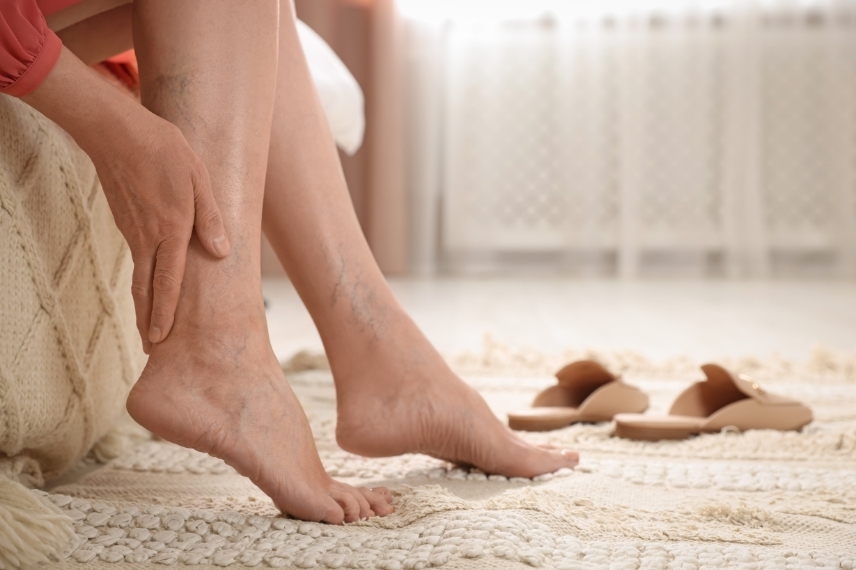
Varicose veins in the legs are a common condition that can range from a purely cosmetic issue to a sign of underlying chronic venous insufficiency. Understanding why they occur, who is at risk, how they progress, and what treatment options are available is essential for managing both the symptoms and long-term consequences.
What Causes Varicose Veins?
Varicose veins develop when the valves inside the leg veins—normally responsible for preventing backflow—become weakened or damaged. As a result, blood begins to pool in the veins instead of flowing efficiently back to the heart. This leads to vein enlargement, increased pressure, and visible bulging or twisting veins under the skin.
Several physiological changes contribute to the development of varicose veins:
- Valve dysfunction
- Loss of vein wall elasticity
- Increased venous pressure in upright posture
- Incompetent perforator or saphenous veins
Who Is at Risk?
Varicose veins can affect both men and women but are more prevalent in certain groups:
- Age: Risk increases with age due to natural wear and tear of venous valves.
- Genetics: A family history of varicose veins is a strong risk factor.
- Gender: Women are more commonly affected, possibly due to hormonal influences.
- Pregnancy: Increased blood volume and pressure on pelvic veins can lead to varicose development.
- Obesity: Excess weight puts more pressure on the leg veins.
- Occupational factors: Prolonged standing or sitting impairs venous return.
- Sedentary lifestyle: Lack of muscle activity reduces the effectiveness of the “muscle pump” mechanism.
- Previous deep vein thrombosis: May lead to secondary venous insufficiency.
When Do Varicose Veins Develop?
Varicose veins may begin to appear in early adulthood but become more common after the age of 40. They often progress gradually and may be influenced by:
- Hormonal changes (e.g., puberty, pregnancy, menopause)
- Weight gain
- Prolonged inactivity or travel
- Multiple pregnancies
Symptoms of Varicose Veins
Symptoms can vary depending on the severity and location of the reflux. Common complaints include:
- A heavy or aching sensation in the legs, especially after standing
- Swelling of the ankles or lower legs
- Throbbing, cramping, or itching over affected veins
- Visible bulging veins, blue or purple in color
- Restless legs, especially at night
- Skin changes, such as dryness, pigmentation, or eczema
- In severe cases: ulceration or hardening of the skin around the ankles
How Can Varicose Veins Be Prevented or Minimized?
While genetic predisposition cannot be changed, the following strategies can help reduce the risk or slow progression:
- Regular exercise: Walking or swimming helps leg muscles pump blood effectively.
- Weight management: Reduces pressure on leg veins.
- Avoid prolonged sitting or standing: Change positions and move regularly.
- Leg elevation: Raising legs above heart level promotes venous return.
- Wearing compression stockings: Supports vein walls and improves flow.
- Avoiding tight clothing: Particularly around the waist and groin.
- Hydration and low-salt diet: Help reduce water retention and swelling.
- Foot and ankle exercises: Improve calf muscle pump efficiency.
When to Seek Medical Evaluation
A clinical evaluation is recommended if any of the following are present:
- Persistent or worsening symptoms such as pain, swelling, or heaviness
- Visible varicose or spider veins, especially if rapidly progressing
- Skin discoloration, eczema, or slow-healing sores on the legs
- A history of blood clots or deep vein thrombosis
The Role of Doppler Ultrasonography
Color Doppler ultrasound is a crucial tool for assessing venous function. It allows detailed evaluation of:
- Great and small saphenous veins
- Perforating veins
- Deep venous system
- Direction and duration of reflux
- Presence of obstruction or thrombus
Ultrasound findings guide the treatment plan by identifying the source and extent of venous insufficiency.
Treatment Options Based on Clinical and Doppler Findings
- Saphenous Vein Insufficiency (GSV / SSV)
- Endovenous thermal ablation (laser or radiofrequency)
- Non-thermal techniques (glue, mechanochemical ablation)
- Aim: Eliminate reflux at its source
- Perforator Vein Reflux
- Ultrasound-guided foam sclerotherapy
- Percutaneous thermal ablation
- Applied when perforators contribute to local symptoms or skin changes
- Varicose Clusters and Bulging Veins
- Microphlebectomy: Removal of surface varicose segments via tiny incisions
- Often combined with ablation of refluxing saphenous veins
- Combined Disease
In many cases, multiple vein systems are involved simultaneously:
- Saphenous + perforators + visible varices
- All can be treated in a single or staged session, depending on patient condition
Management of Reticular and Spider Veins
After the correction of underlying reflux, remaining superficial veins can be addressed:
- Reticular veins: Foam or liquid sclerotherapy
- Spider veins: Microsclerotherapy or laser treatment
Treating superficial veins before addressing deeper reflux may lead to poor or short-lived results.
Summary
Varicose veins develop from a complex interaction of anatomy, pressure, valve dysfunction, and lifestyle factors. Accurate diagnosis—including Doppler ultrasonography—is essential to identify the cause and determine appropriate treatment.
A stepwise, anatomical approach addresses the:
- Underlying reflux (GSV, SSV, perforators)
- Visible varicose clusters (via microphlebectomy)
- Cosmetic veins (via sclerotherapy or laser)
Early intervention and tailored care not only improve symptoms but also help prevent complications such as skin damage, ulceration, or recurrent varicose formation.


